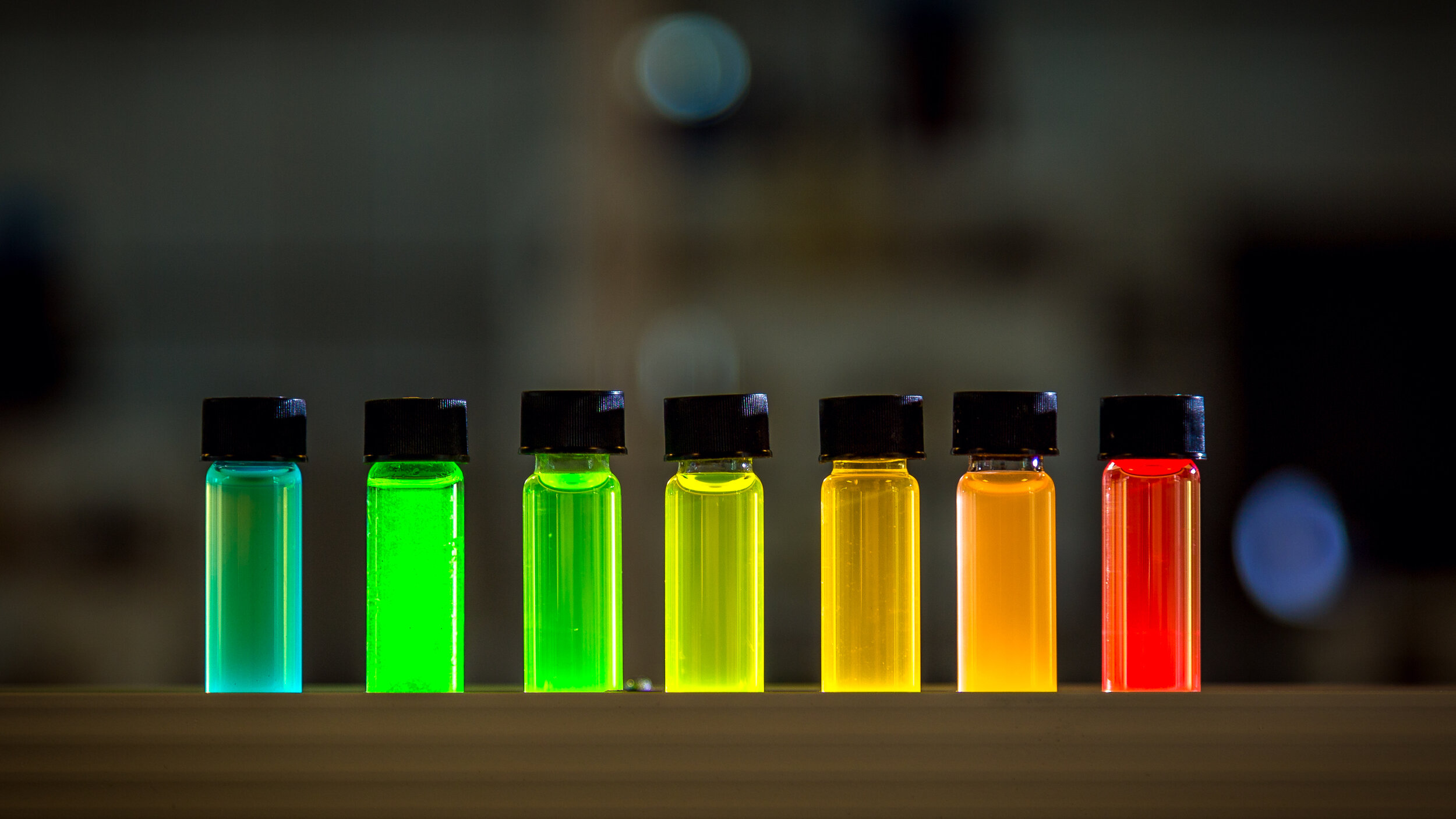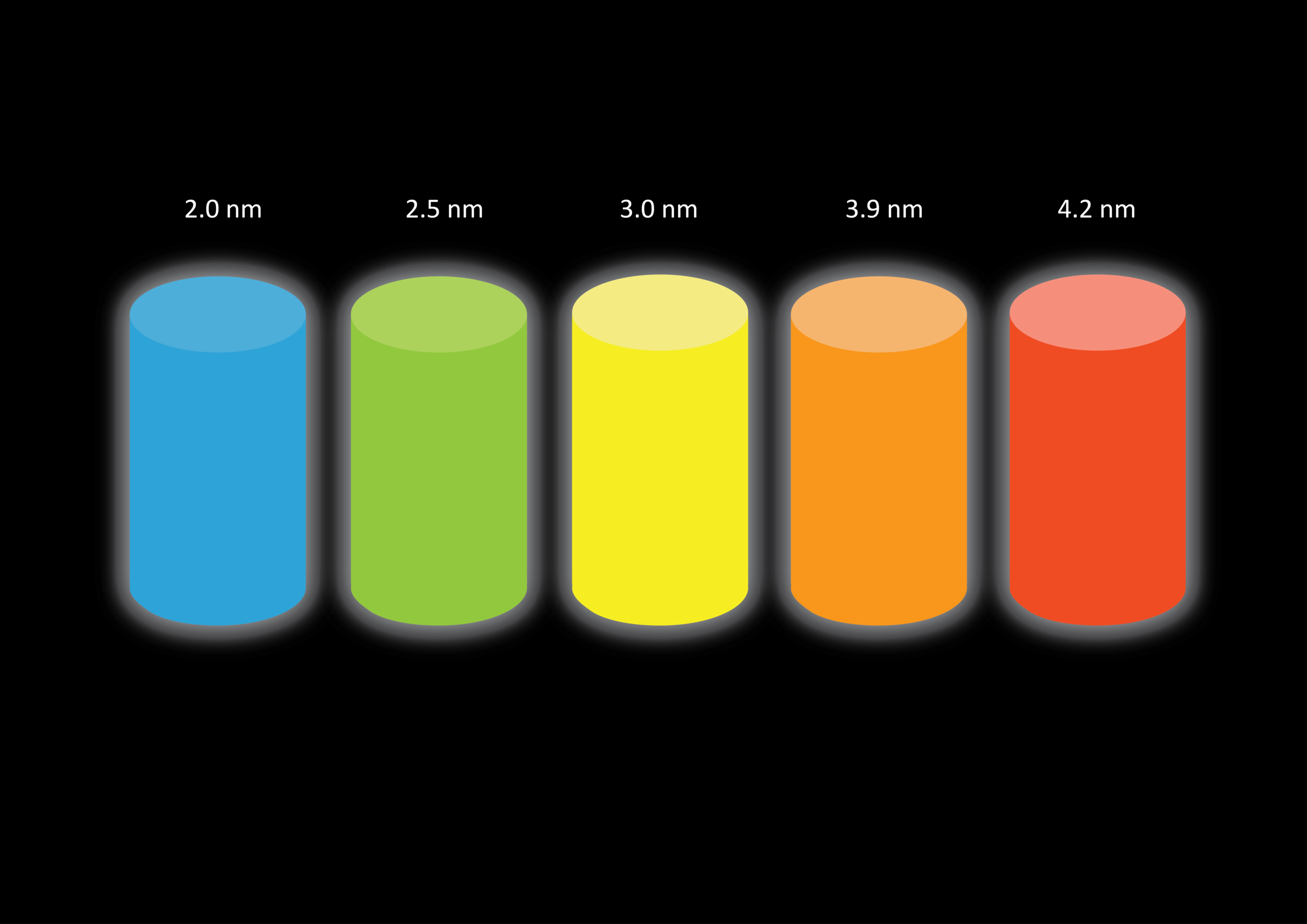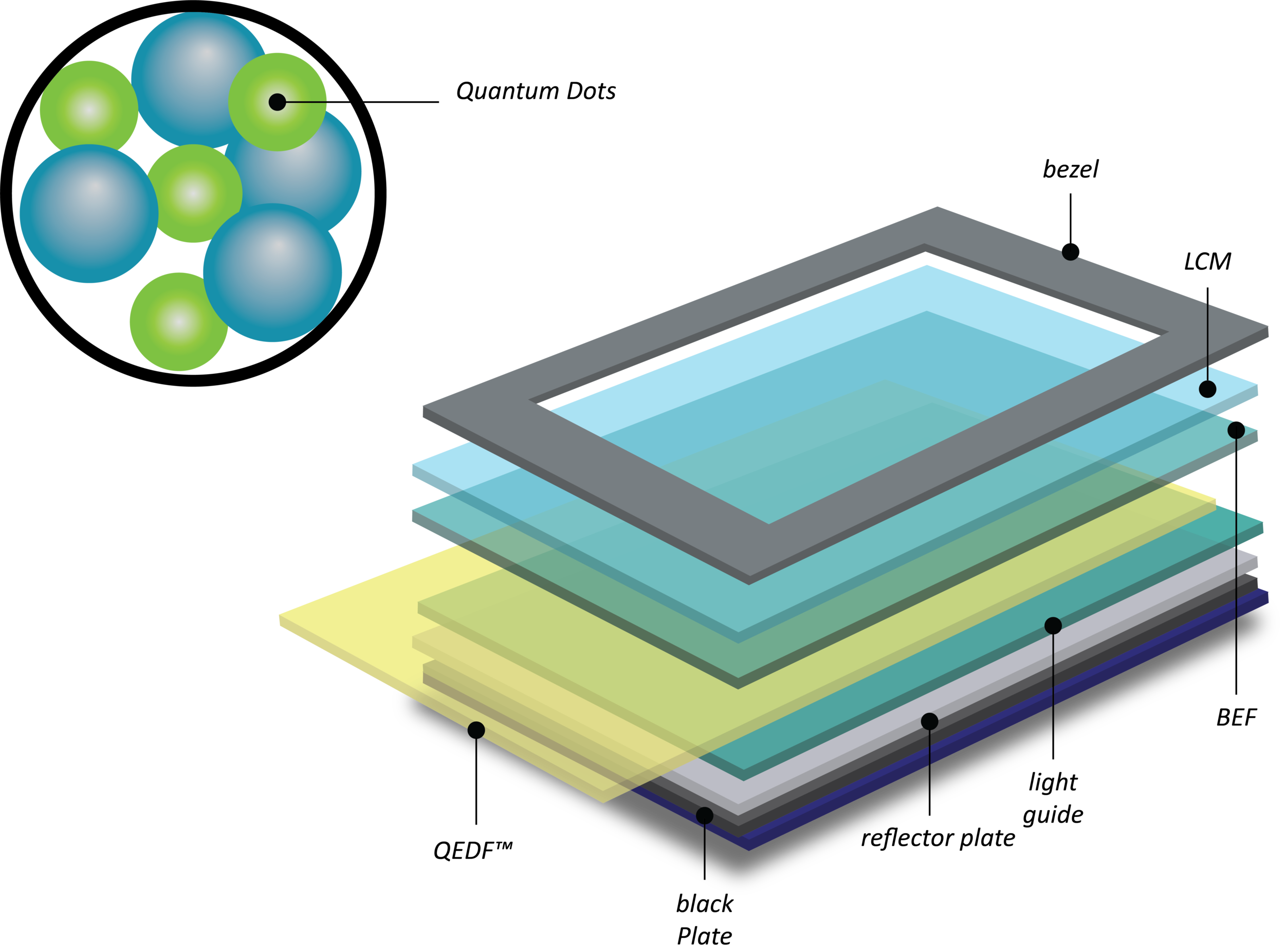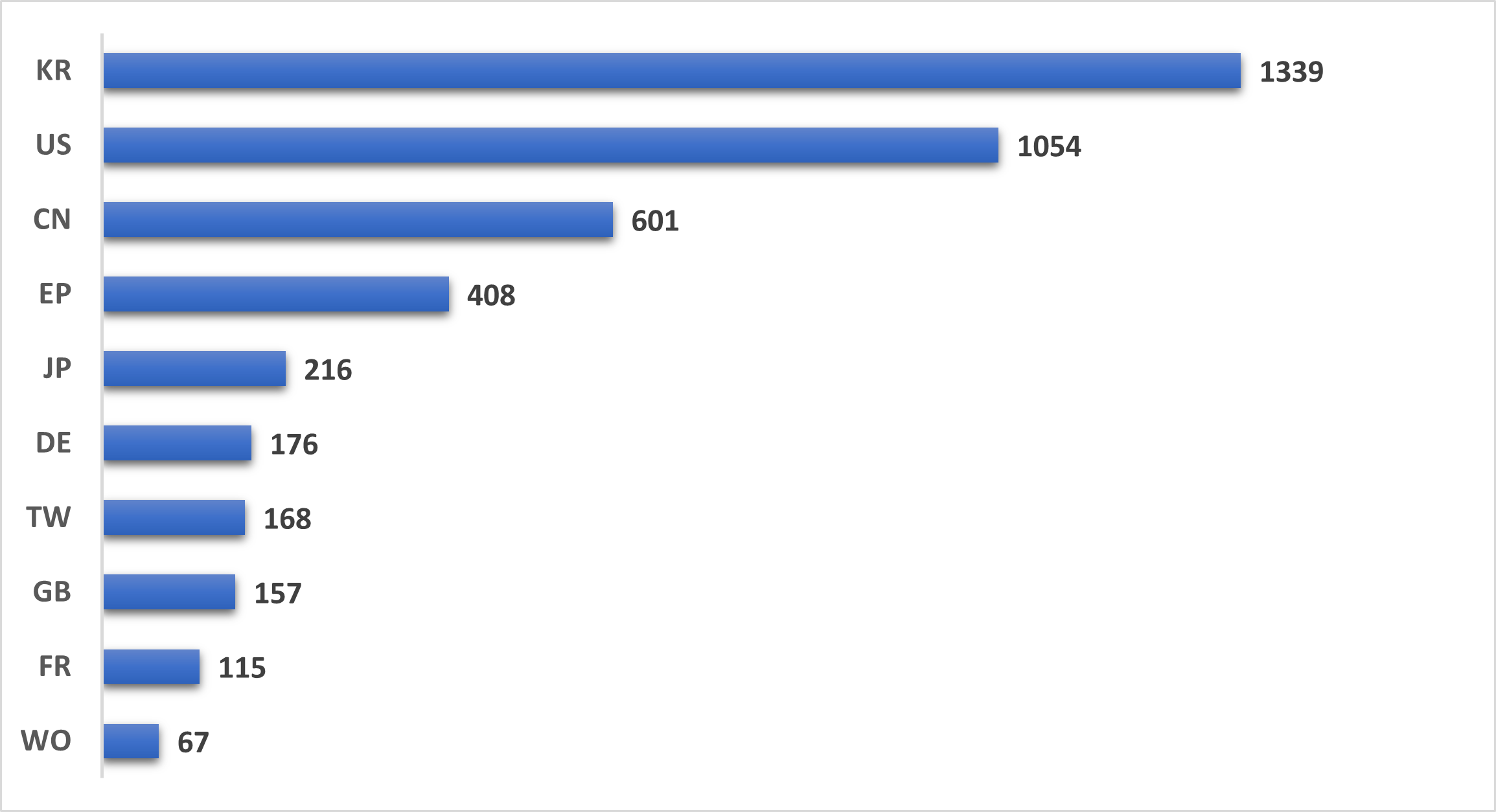Quantum Dot Technology: Enlightening The Future
A Quantum Dot (QD) is an ultra-small speck of matter which is so tiny that it's effectively concentrated into a single point. They are human-made zero-dimensional nanomaterials, having all the dimensions in the nanoscale (typically 1.5 and 10.0 nm). Thus, the particles inside it that carry electricity (electrons or holes) are trapped in all 3 dimensions and have well-defined energy levels.
Quantum Dot
QDs show different properties based on size, shape, composition, and structure (like solid or hollow). By controlling the shape and size of QDs, one can achieve desired electrical, magnetic, and optical properties, which provides a wide variety of applications from light-emitting diodes (LEDs) to photovoltaics, photodetectors, lasers, and field-effect transistors.
Several companies are exploiting the unique effects of QDs for various applications. One such primary application is Quantum computing, which can solve complex problems that are difficult for classical computers. Classical computers are getting faster and smaller every year in accordance with Moore's Law which describes how the number of transistors on a microchip doubles every two years. But soon, the physical limits of materials (like the gate length of a transistor) prevent present-day computers from advancing any further. QDs give the possibility to store and transmit information with light instead of electrons - a field of study broadly known as photonics.
In Quantum computers, QDs act the same way as transistors in classical computers, which are essential logic gates and memory chips. The logical bits are stored by individual atoms, ions, electrons, or photons linked together (or entangled) and acting as Quantum bits called qubits. Qubits have three Quantum states. A qubit can be a Quantum state 1 or 0, or it can be in a superposition of these 1 and 0 states. These Quantum-scale switches can store multiple values simultaneously and can work parallelly on different problems. According to Psiquantum, Quantum Computing will revolutionize all industries, including faster computers. Efficient Quantum computers require ~1 million quantum bits. These qubits can be made using silicon photonics.
QDs have also successfully entered the biomedical industries. These Quantum-sized particles can be attached to biological materials to act as a barcode or tracking device. QDs are currently used for labeling live biological material in animals for research purposes. QDs are injected into cells or attached to proteins for tracking, labeling, or identifying purposes. QDs also provide critical medical applications, including potential cancer treatments, by accumulating the Dots in particular parts of the body to deliver anti-cancer drugs. Thus, they can target specific organs, such as the liver, more precisely than conventional drugs.
It Is All About Color
QDs are nanoparticles, and their size dictates the wavelength of light it emits and explains the whole gamut of colors they produce. When QDs are hit with a light source, each dot emits a color of a specific bandwidth: Larger Dots emit light skewed towards red, and progressively smaller Dots emit light inclined more towards green.
QDs convert incoming light into patterns of electrical signals in CCDs (charge-coupled devices) and CMOS sensors (e.g., Samsung’s ISOCELL CMOS Camera Sensor) which are the image-detecting chips in digital cameras and webcams. QDs replace traditional semiconductors (Silicon-based semiconductors) in solar cells to boost the efficiency, photons of sunlight knock electrons out of QDs plate into a circuit, making usable electric power.
QDs work on the same principle as an atom, which gives the energy to boost an electron in it to a higher energy level. When this electron returns to a lower level, the atom emits a photon of light with equivalent energy that the atom initially absorbed. The colors of light an atom emits depend on the arrangement of its energy levels, whereas QDs give out different colors of light depending upon their sizes. Quantum confinement effects take over when we shrink an object to the size scale of an emergent phenomenon. As we shrink a quantum dot, the size of the particle approaches the size of the electron-hole distance known as the Bohr radius.
This is the band gap energy for a spherical box, where n is the index of the energy level, h is Planck’s constant, m is the effective mass of a point charge, and L is the size of the particle. We see from this expression that as our particle increases in size, the band gap energy decreases. Therefore, as size varies in QDs, the energy changes because the exciton in the QDs behaves like a "particle in a box."; Because the frequency of emitted light is directly proportional to the energy, smaller dots with higher energy produce higher frequencies (and shorter wavelengths, i.e., blue light) and vice versa for larger dots (i.e., red light).
Quantum Dot Size and Color (Source)
QDs have different optical and electrical properties due to their quantum confinement effect, size effect, surface effect, and macroscopic quantum effect. Quantum confinement in QD’s provides unique optoelectronic properties, like high Quantum Yield (QY), which is defined as the ratio of the number of photons emitted to the number of photons absorbed, emission profiles adjustable based on the QD’s size, and narrow emission bands. QDs are manufactured using different chemical compositions. The covalent bonding between III-V based QDs is more than II-VI based QDs which makes high temperature dual injection manufacturing process difficult for III-V based QDs. Also, III-V based QDs are more toxic than II-VI based QDs. Therefore, binary QDs composed of elements of groups II-VI , that is, ZnSe, ZnS, ZnTe, HgS, HgSe, HgTe, and ZnO are mostly used.
QDs are nano particles in which charge carriers are three-dimensionally confined or quantum-confined. Graphene Quantum Dots (GQDs) also show great potential in the fields of optoelectronics, photovoltaics, biosensing, and bioimaging owing to their unique photoluminescence (PL) properties. They also have excellent biocompatibility, low toxicity, and high stability against photobleaching and photoblinking.
How atoms make light. (Source)
Size, wavelengths, frequencies, and energy of different QD.. (Source)
Quantum Dots are just a few nanometers (nm) wide. Bigger Dots produce longer wavelengths, lower frequencies, and redder light; smaller Dots produce shorter wavelengths, higher frequencies, and bluer light.
Quantum Dots of different sizes are contained in these vials. The wavelength of their fluorescence is dependent on the size of the QDs (Source)
Quantum Dot In The Display Market
QDs are extremely energy efficient, so a display using QD technology can produce the reflectance across all wavelengths of light comprising the full visible spectrum with better efficiency QDs are of two types: electro-emissive (electroluminescent) and photo-emissive. Electro-emissive QDs are used as light-emitting diodes. Photo-emissive QDs can be used in a display layer that converts monochromatic blue light from an LED backlight to emit pure colors for LCD screens.
QDs absorb higher energy light and re-emit at whatever wavelength the particle is tuned for. For most displays that utilize QDs, an LED backlight provides narrowband blue light absorbed by 2 different sizes of QDs. The QDs residing on a "color enhancing film" re-emit either red or green light, supported by their size. The re-emitted red and green light merge with a number of blue light photons that infiltrate, forming a good gamut white light source. In general, the broader the gamut on the backlight, the more colors are available for the display.
A photo-emissive Quantum-Dot layer acts as a filter to refine the color temperature and enhance the brightness of light produced by the energy-efficient blue LED backlight. Red and green QDs are on the top filter layer and use the energy of the backlight to generate red and green hues in the display. It allows for a wide range of color gamuts.
QDs produce better color and deliver better performance, therefore Quantum Dot LEDs (QLEDs) have more brightness than OLEDs. In other aspects, OLEDs are faster with lesser response time than QLEDs; OLEDs can be viewed from drastic angles whereas QLEDs have the best view at the center; OLEDs have difficulty with larger screen sizes, for example, OLEDs can be maxed out to 55 inches and rarely more than that, however, QLEDs can be maxed out to 98 inches. QLEDs do not cause image retention (known as Screen Burn-in) while OLEDs cause image retention. Also, QD technology is cheaper than OLED because of manufacturing costs, for example, LG Z9 – 88 Inch – 8K OLED TV is sold for $30,000, whereas Samsung 85 Inch- Q900TS 8K QLED TV is sold for $6,000.
Quantum dots are used in television for color conversions (Source)
Nanosys Quantum-dot film sheet (QDEF) fits into an LCD. (Source)
Quantum Dot in Television (Source)
Challenges Faced In Quantum Dot Technology
Quantum Dot Quantum dot manufacturers face multiple issues during QD technologies, such as efficiency, toxicity, stability, and operational lifetime. Many manufacturers prefer indium-based QDs as compared to cadmium-based QDs due to their lesser lower toxicity. QDs are kept away from high-temperature surfaces; otherwise, inefficiency can occur in the re-emitting of the amount of light. QDs are vulnerable to humidity and oxygen. QDs' instability, crystal-structure imperfections, and surface defect lead to low Quantum Yield. QDs are highly reactive due to their high surface-area-to-volume ratio. For efficient and stable quantum computers, millions of qubits are required, so the challenge is to scale the control infrastructure of such large numbers of qubits.
Market Analysis
The Quantum Dots market was valued at USD 652.2 Million in 2020 and is expected to reach USD 4.416 Billion by 2026 and grow at a CAGR of 40.9% over the forecast period (2021 - 2026). The demand for QDs in highly efficient and color-saturated displays is rapidly increasing. The domain of the application of QDs is expanding every year, in medical applications, optical applications, display applications, etc., due to their variety of properties. As shown below, there is rapid growth in QD Market in the US, Canada, South-Asian Subcontinent, and Australia.
Quantum Dot Market - Growth Rate by Region (2019-2024) (Source - Lumenci)
Major Players In Quantum Dot Technology:
1. Samsung was founded in 1938 and is based in South Korea. QD Vision is one of its subsidiaries.
2. LG was founded in 1947 and is based in South Korea.
3. NANOCO GROUP PLC was founded in 2001 and is based in the United Kingdom. Nanoco focuses on cadmium-free, film-based QD systems. The link below shows the list of patents published in QD Technology in different jurisdictions.
4. Nanosys INC was founded in 2001 and is based in the USA. Nanosys produces both cadmium and cadmium-free Quantum Dots (QDs).
5. Quantum Dot (QD) Corporation, QDC was founded in 1998 and is based in the USA.
As shown below, in the last ten years, South Korea (1339), the US (1054), and Canada (601) are the top three jurisdictions where significant players in the Quantum Dot (QD) industry have applied for patent protection..
Geographical Distribution of Patents for Quantum Dot (QD) Technology (Source - Lumenci)
The figure below shows that Samsung (1313), LG (476), Nanoco (75), and Nanosys (65) have filed the highest number of patent families in this technology in terms of assignees.
Top 10 Patent Assignees with number of patents for Quantum Dot (QD) Technology (Source - Lumenci)
The figure below shows the number of patents filed each year from 2000-2021. There is an increasing trend in patent applications related to QD technology over the decades.
Total number of Quantum Dot (QD) technology patents filed annually over two decades (Source - Lumenci)
In conclusion, Quantum Dot technology is an upcoming candidate to impact multiple industries. While we reviewed only a subset of QD applications in the display, medical and optical industry, the future looks bright for the impact of the QD Technology across a broad range of technology domains.
*Disclaimer: This report is based on information that is publicly available and is considered to be reliable. However, Lumenci cannot be held responsible for the accuracy or reliability of this data.
*Disclaimer: This report is based on information that is publicly available and is considered to be reliable. However, Lumenci cannot be held responsible for the accuracy or reliability of this data.
Editorial Team at Lumenci
Through Lumenci blogs and reports, we share important highlights from the latest technological advancements and provide an in-depth understanding of their Intellectual Property (IP). Our goal is to showcase the significance of IP in the ever-evolving world of technology.













